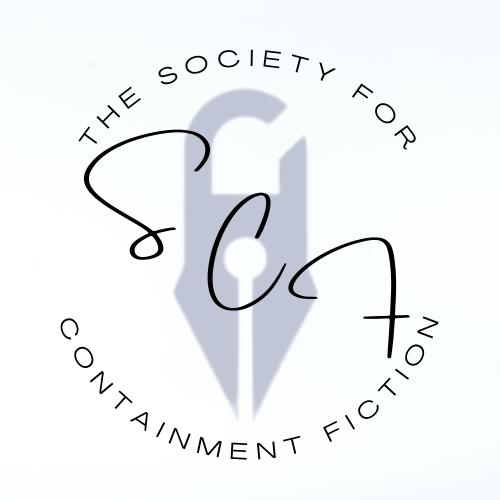SCPs Into the RPC Object Classification
- Confic Magazine
- Mar 3, 2022
- 4 min read
Updated: Mar 5, 2022
Culture & Community
by Dr Pierson

A while ago, I posted a video on my YouTube channel discussing the object classes of the RPC Authority. As a common tradition from time-to-time, I also post comparison content between SCP and RPC on varying subjects, mainly lore between the two, i.e. object class. While we’re on the subject of object classes, there is this odd fascination amongst Confic enthusiasts like myself; switching and analyzing SCP articles into the RPC’s object classes.
Not because the idea of it is fascinating, but it redefines and constitutes a further understanding of what these SCPs are capable of under a different classification that, whilst subjective, is far superior and efficient. I may be that one Confic writer who is subjectively for bureaucracy and a well-defined protocol, but there are a few reasons why I dislike the very cloudy definitions of what the SCP’s object classes are.
Non-canon is one thing, but having to scramble under the idea of “creative” or “freedom” writing is something you don’t want to have when you, as a researcher, are hoping to ensure that every single person understands and avoids these hazardous anomalies. I remember a conversation with a fella of mine where they claimed that “...Keter and Apollyon are interchangeable.” (Not exact, but paraphrasing).
It doesn’t bode well for the SCP’s object classes when the wording amongst them becomes questionable. In the case of the RPC’s object classes, they determined and shaped their classifications under the idea of containment difficulty. This doesn’t exactly apply on the object classes of SCP, as they consider other factors and not just specifically containment difficulty.
But how about the dangerous nature of an anomaly? How does that affect containment exactly? Well, it doesn’t. The RPC Authority classifies their object classes in terms of danger as a separate category. They have two tiers: containment and lethality rating. The containment is represented by a symbol. These are, in order of increasing difficulty: Alpha, Beta, Gamma, and Omega. The lethality is represented by a color-discriminator; in order of increasing lethality: White, Yellow, Orange, Red, Purple, and Black. It’s beneficial and life-saving to denote an anomaly’s dangerous nature, that's the benefit of this approach and how it differentiated itself from SCP. Later efforts in the SCP, such as the garrulous Anomaly Classification System, eventually attempted to do this; but ACS is a little too much too late actually, it does more to obfuscate than to clarify.
Let’s jump into the meat n’ potatoes, if you will, and play a little game that I call “Conversion.” It’s simple: You apply the RPC’s object classes into an SCP. The fun part is afterwards where you debate, discuss, and interpret whether or not these actually are correct to their SCP object class.
This is a fun exercise to do when you are reading other containment fiction. Let’s try some examples:

SCP-049 is designated with “Euclid”. It is a humanoid in the guise of a Plague Doctor from the 13th Century who can “detect” people who have the plague, and can revive corpses as an instance.
Now let’s do the conversion: SCP-049 is difficult to contain and inherently unpredictable, but not actively lethal. Therefore, under RPC's classification, it would most likely be Beta-Orange.

SCP-099 is designated as “Safe”. It is a painting made by René Magritte called “The Portrait.” At first glance, this seems like a relatively harmless anomaly … until you understand that prolonged visual contact with SCP-099 causes a disturbing amount of psychological effects, such as acute paranoia and enochlophobia. SCP-099 is easy to contain but situationally lethal.
Therefore, it would most likely receive the Alpha-Yellow classification.

SCP-173 is designated with “Euclid” as it's an animated, concrete-like sculpture that actively kills any person when visual contact is broken. SCP-173 is difficult to contain and actively lethal. So, as for its RPC classification, SCP-173 would be Beta-Red.

SCP-999 is designated as “Safe”. It is a gelatinous mass of translucent orange slime that causes mild euphoria. It is one of pleasant and oddly cute SCPs out there, and poses no real containment difficulty or threat. In fact, this is so easy-going, researcher's let SCP-999 walk around the containment facility.
SCP-999 would easily be Alpha-White, maybe even with a Utility secondary designation, as it can be useful to the Authority.

SCP-1178 is designated with “Keter”. It is a Soviet RT-2 Intercontinental ballistic missile (ICBM) that will actively accelerate when an organism approaches it from a distance of 200 kilometers or less. This anomaly is a terrifying in that it can cause a lot of damage and death. Additionally, SCP-1178 is very difficult to contain given its anomalous properties.
Its classification under the RPC Authority would likely be Gamma-Purple; very difficult to contain and something that can cause the wiping out of a populace en masse (but not the entire planet).

SCP-1501 is designated as “Euclid”. It is a collective humanoid that does charity work and, when a subject donates several times, will follow them to their homes as means of further advertising and collecting their donations.
As it doesn’t appear to show any signs of aggression or hostility, and is relatively containable, SCP-1501 would most likely be Beta-Yellow.
The RPC’s object class is unique in its own nature. While directly taking inspiration from the SCP’s object class, it has upstaged it in a two-arm spectrum of classification; one that determines the anomaly’s difficulty of containment and lethality in a concise and easy-to-understand fashion. It goes to show that novel methods of classification can be developed, and that they don't necessarily have to exponent the complexity in order to do it. While ACS will be the more recognized classification scheme due to its sheer exposure and due to those who pushed its adoption, the RPC's system quietly does all ACS wants to, only better.
Another excellent system is that of the by-gone Wayward Society, which essentially visualized its containment procedures into something RPC's became reminiscent of. But doing something similar with Wayward's system is another bout of fun for another time.
© Blake Pierson
© Confic Magazine
Images used in this article are CC BY-SA 3.0 or are under Fair Use.








I hadn’t noticed this before, but the face on that re-imagined SCP-173 is the cross section of a human head as seen through a CT scan. It’s what it would look like if you cut the skull straight down, top to bottom and the tissues were perfectly preserved.
Alright interesting thought exercise, try and take an RPC and classify it with the SCP system! A lot more difficult but also probably pretty fun! -Fern.
Hey, I recognize some of these! Great article, I really love this concept and I hope you revisit it, maybe crossing some more confic streams to see what interesting ideas come from the recombination.